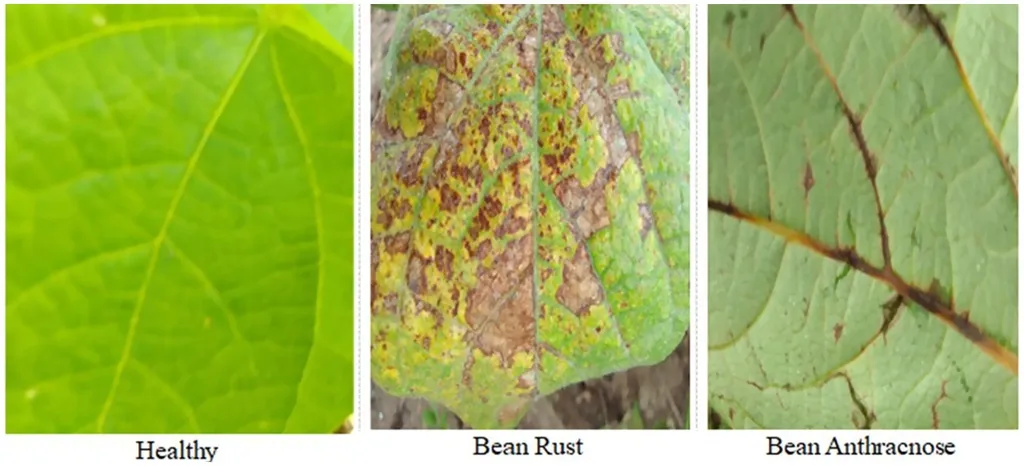In the realm of agricultural technology, a groundbreaking study has emerged that could revolutionize how we detect and manage bean leaf diseases. Led by Ibrahim Furkan Ince from the Department of Software Engineering at Istinye University in Istanbul, Türkiye, the research introduces a novel method called DCT-Transformers, which combines advanced image preprocessing with cutting-edge deep learning models to achieve unprecedented accuracy in disease detection.
The study, published in *Frontiers in Plant Science* (translated to English as *Frontiers in Agricultural Science*), addresses a critical challenge in agriculture: the early detection of bean leaf diseases. These diseases, often imperceptible to the human eye, can significantly impact agricultural productivity and food security. Traditional machine learning methods struggle with precise feature extraction, making early detection difficult. However, Ince and his team have developed a solution that could change the game.
The DCT-Transformers method leverages a preprocessing technique known as dynamic range-enhanced discrete cosine transform (DRE-DCT). This technique enhances the dynamic range of input images by extracting high-frequency components and subtle details that are typically imperceptible, all while preserving overall image quality. By applying this preprocessing step, the team was able to significantly improve the performance of Transformer-based models in classifying bean leaf diseases.
“The key innovation here is the combination of DRE-DCT with Transformer models,” Ince explained. “This approach allows us to capture details that were previously overlooked, leading to a substantial improvement in classification accuracy.”
The results speak for themselves. The DCT-Transformers method achieved a classification accuracy of 99.56% when using preprocessed images, compared to 95.92% with non-preprocessed images. This represents a significant leap forward, outperforming state-of-the-art approaches and similar studies. The precision, recall, and F1-score metrics all reflect this enhanced performance, underscoring the method’s reliability and effectiveness.
The implications of this research are far-reaching. Early and accurate detection of bean leaf diseases can lead to more effective disease management strategies, ultimately supporting food security initiatives. For the agricultural sector, this means improved productivity, reduced losses, and a more sustainable approach to crop management.
Ince’s work also highlights the potential for similar advancements in other areas of agricultural informatics. By enhancing feature extraction through advanced preprocessing techniques, researchers can develop more robust and accurate models for a wide range of applications. This could include detecting diseases in other crops, monitoring plant health, and even predicting yield outcomes.
As the agricultural industry continues to embrace technology, the integration of advanced image processing and deep learning models like DCT-Transformers could become a standard practice. This not only benefits farmers and agricultural businesses but also contributes to global efforts in ensuring food security and sustainability.
Ince’s research is a testament to the power of interdisciplinary collaboration and innovation. By bridging the gap between software engineering and agricultural science, he has opened new avenues for exploration and development. The future of agricultural technology looks promising, and with continued research and investment, we can expect even more breakthroughs on the horizon.
In the words of Ince, “This is just the beginning. The potential for these technologies to transform agriculture is immense, and we are excited to see where this journey takes us.”

